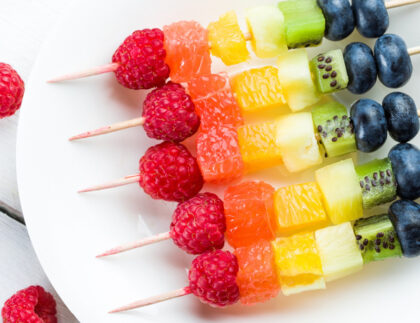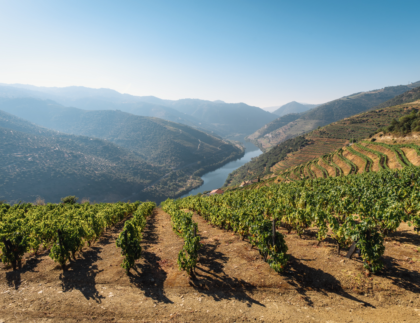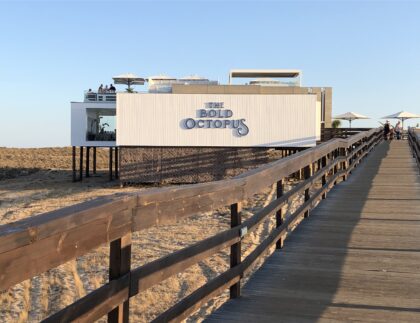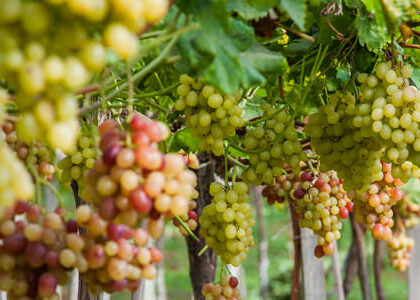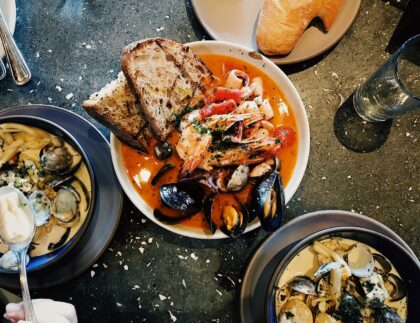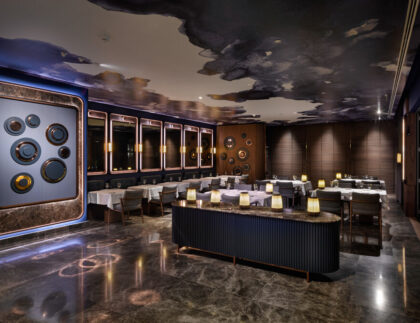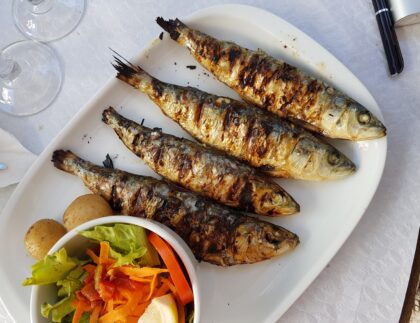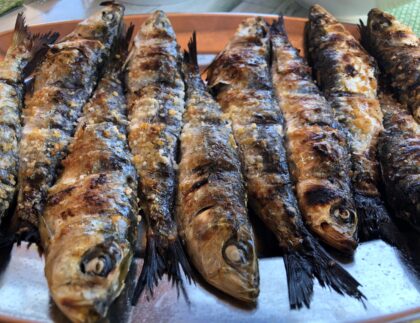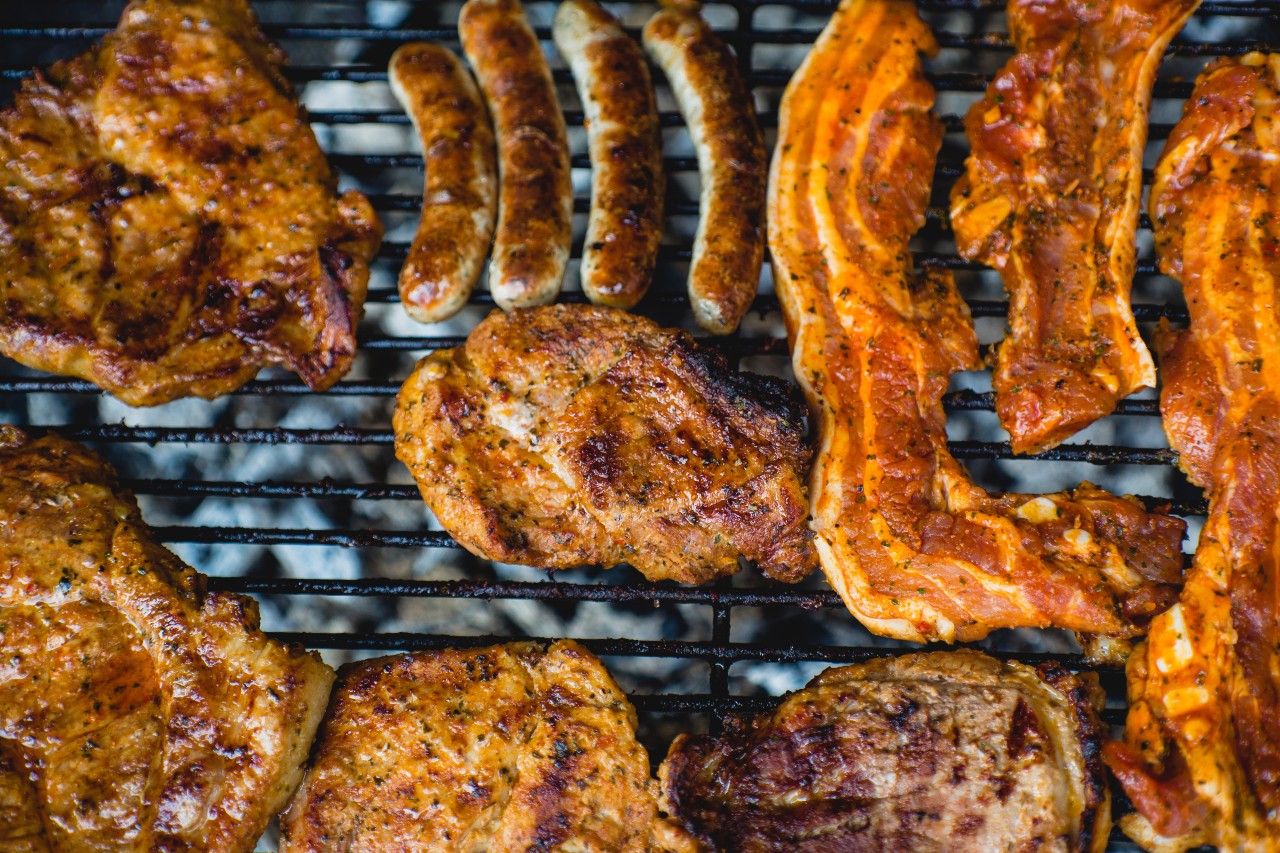
It’s summer at Villa Cascata your luxury holiday villa in the Algarve and this means it’s the perfect time for a spontaneous BBQ. You never know when you’ll have friends over for fun in the sun, here’s a guide on what you’ll need for the best BBQ in town in order for you to relax when hosting.
I am going to break this down into male BBQ tasks and everything else ladies, you know what I mean!
BBQ Pitmasters In the USA
Barbecue is probably the most common technique of cooking outdoors and most popular in countries like the US with regional styles as diverse as the country itself, from the smoked brisket of Central Texas and the sticky ribs of Memphis to Kansas City’s burnt ends and the vinegar- and mustard-sauced pork of the Carolinas, however it’s not just the Americans that enjoy this method of cooking alfresco and it its origins are far from this continent.
The exact origins of the word “barbecue” is relatively simple, The word “barbacoa” is what the Spanish called the indigenous peoples’ way of cooking meats over a wooden platform. And there have been generations of debate about what meat, method, marinade, and municipality makes for the “best” barbecue in this country.
You can’t grill accurately unless you know the cooking temperature
There are two important numbers here: the temperature in the cook chamber, which helps you with indirect grilling, smoking, and smoke-roasting and the temperature at the grate level for direct grilling.
Many grills, such as a kettle grill, come with thermometers built into the lid, which gives you the approximate temperature at the level of the thermometer probe—essentially 6 to 10 inches above the grate. The temperature at grate level will likely be different.
- The “Mississippi” method: Hold your hand 3 inches above the grate over the zone where you’ll be grilling. Start counting “one Mississippi, two Mississippi,” etc. You’ll be able to keep your hand over a hot grill for 2 to 3 seconds, over a medium grill for 5 to 6 second, and over a low heat grill for 10 to 12 seconds. Holding your hand over the grate will give you a definite sense of the heat
- Refueling with most direct grilling, one chimney of charcoal or wood chunks will last 30 to 60 minutes. For a prolonged direct grill session and indirect grilling, you will need to replenish the fire
- When replenishing lump charcoal, add fresh lumps to the fire and leave the grill open (lid off) for 5 minutes, or until the fresh coals catch fire
- When replenishing charcoal briquettes, I like to light them separately in a chimney starter, then add them to the fire. (Adding unlit briquettes to a fire often generates an unpleasant acrid smoke)
The basic grill temperatues and what they are used for
Low Heat (225 to 250 degrees) - Smoking and true barbecue. Use for brisket, ribs, pork shoulder, whole pigs, lamb, or goat.
Medium-Low Heat (275 to 300 degrees) - True barbecue and indirect grilling. Good for ribs and pork shoulder, leg of lamb, beef joint if your like it rare
Medium Heat (325 to 350 degrees) - Direct grilling, indirect grilling, smoke-roasting. Good for roasts, pork loin, poultry (whole birds), whole fish, large dense vegetables such as cabbage, onions, or cauliflower.
Medium-High Heat (375 to 400 degrees) -Direct grilling, indirect grilling, smoke-roasting, plancha, and salt slab grilling. Use for chicken pieces, planked fish, large vegetables.
High Heat (450 to 600 degrees) - Direct grilling. Good for steak, chops, fish steaks, pizza, chicken breasts, small or high moisture vegetables or fruit.
Incendiary (650 degrees and higher) -Direct grilling and infrared grilling. Best for searing steaks and chops.
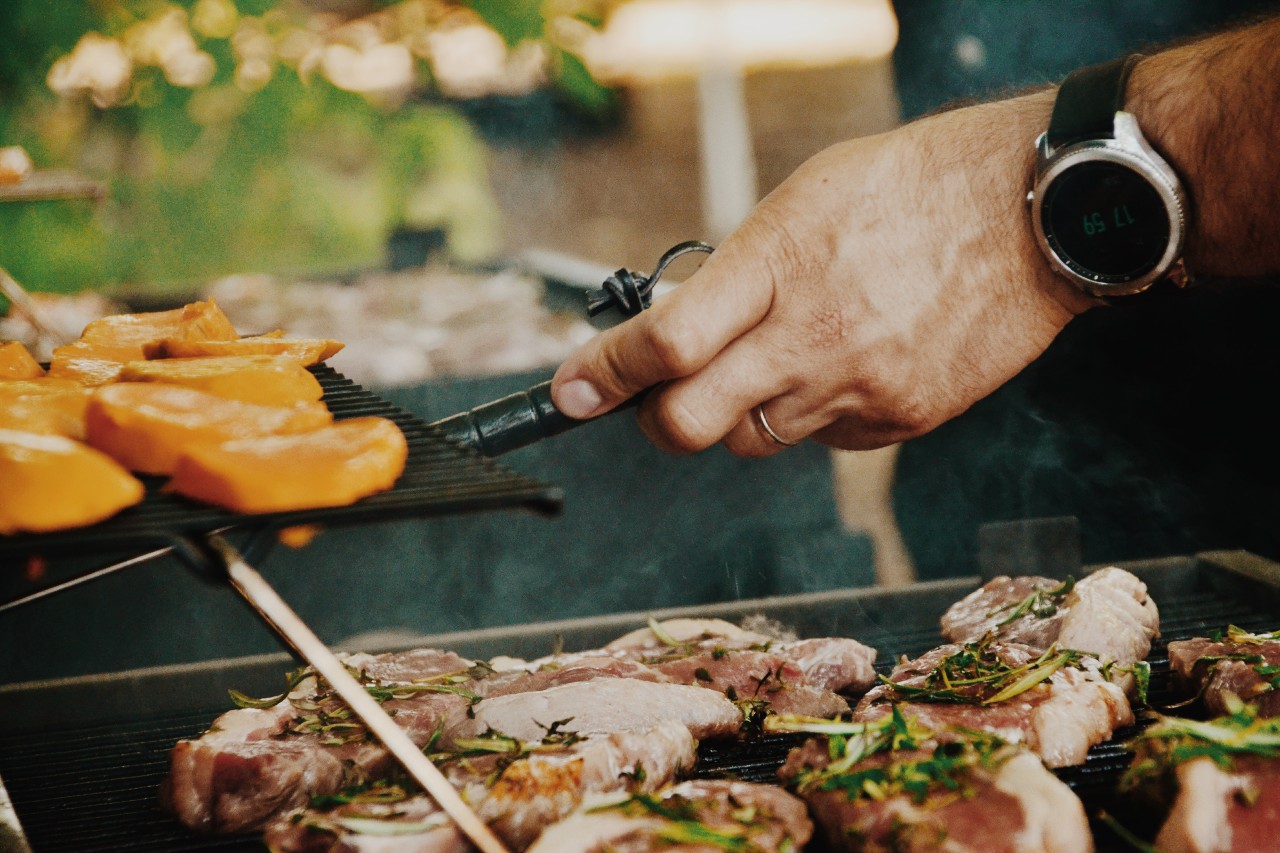
Now we’re cooking
Put the meat on the grill and leave it undisturbed for a minute before turning, then turn every minute or so until you have achieved some enticing caramelisation. If your meat is on the thick side, regular turning helps prevent it catching and burning. Always move your meat if yellow flames leap up from the barbecue – this means fat has caught fire, which can make meat taste too smoky.
Don’t overcrowd the grill. Leave plenty of space between each piece of meat, so oxygen can reach the charcoal. It is impossible to give exact cooking times: it depends on the thickness of the meat, the animal it comes from, the cut and the temperature of the grill.
Controlling temperature can be learned only through practice. You will soon begin to understand the hot and cool spots, how long it takes for the coals to burn down to the optimum temperature and how long a full load of charcoal lasts.
For tougher cuts, try pushing the coals to one side and putting on a lid with the vents open, to let air pass through (if your barbecue doesn’t have a lid, improvise with something else made of metal). This is known as indirect grilling or roasting, and causes hot air to flow evenly around the meat, much as occurs in a convection oven.
Indirect fire cooking is far from an exact science, but as long as you have a meat probe to hand (there is a wide choice on Amazon, to suit all pockets) and know the optimum temperature for whatever meat you are cooking, all should be well. Don’t forget touch, either: the more well done a piece of meat is, the firmer it will feel. Again, it is something you will pick up only through practice, but using a probe and fingers side by side will help you train your touch without too many mistakes. Resting is one of the most important stages in any barbecue: your meat will continue cooking in the residual heat
Two-zone cooking
Indirect cooking also provides a safety net. By using two cooking zones – direct and indirect – you can moderate how your meat cooks: if the grill gets a little out of control, just move the meat to the indirect area until it calms down. The aim is to have two very different temperatures, one at each end of the barbecue. Ideally, the indirect zone will hover about 105-130C, while the direct zone will be about 170-190C.
Dirty grilling
The other end of the spectrum is dirty grilling, or “clinching”, direct on the coals. Here, it is vital to use high-quality charcoal and wood – and to show no fear. It’s pretty hard to burn meat this way: put it right against (rather than just close to) the coals and they won’t get enough oxygen to create fire.
Put the meat straight into the smouldering wood or charcoal, keep it moving and it will colour fairly quickly and give off some splashes and sizzles. When you think it is nearly done, transfer it to an area of indirect heat and leave it to finish and rest. Warning: this takes a bit of practice.
Resting
One of the most important stages in any barbecue. Take the meat off before you think it is ready and let it rest: it will continue cooking in the residual heat and the tissues will relax, meaning what you serve will be juicier and more tender. Our tastebuds work better at more moderate temperatures, too. A 20-minute rest at 60C will improve your grilling no end – provided you can resist that long.
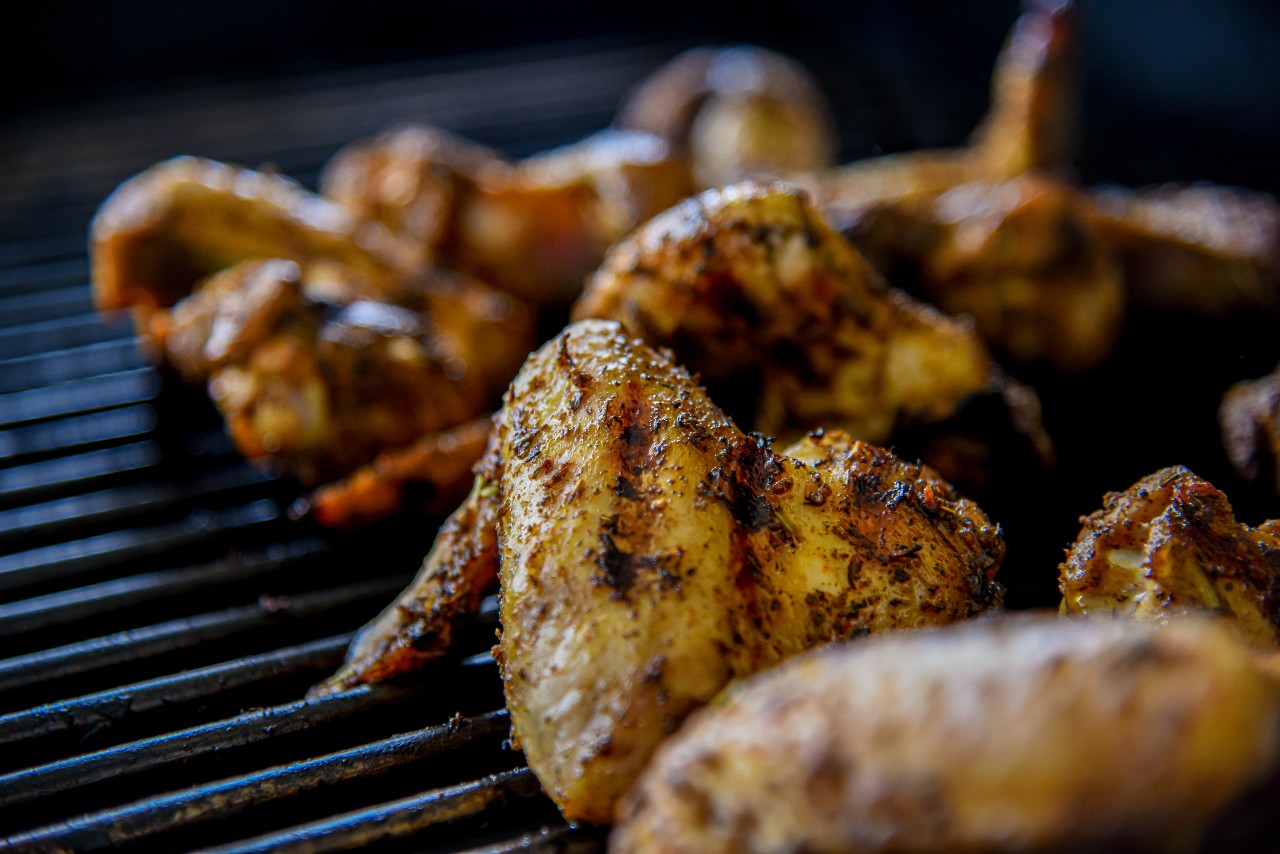
Portuguese Piri Piri also spelt Peri Peri & Peli Peli
It originated in Africa, Mozambique to be exact. Their use of the African birds eye chili and cooking over charcoal was the backbone of this cracking dish. The Portuguese people who were not adapt at cooking over charcoal discovered this method of cooking and marinating chicken and it was soon taken back home to Portugal where they added acidity like lemon and garlic too it. Over in South Africa they will claim it's their national dish and that knowing how to cook peri peri is a right of passage. They talk about it's not just the cooking style but the sauce, marinade and basting too that makes the chicken dish what it is. Visit one of our favourite places at Piri Piri Almancil
P.P Sauce
- 2 red peppers / capsicums
- 3 cloves garlic
- 1/2 tsp ginger grated
- 1 tsp oregano
- 2 tbsp lemon
- 2 tbsp red wine vinegar
- 4 red cayenne chilis
- 2 African birds eye chilis
- salt
- pepper
- 1/2 onion
Simply blend the lot – I would use a hand blender or food processor to make this thick sauce - there is a blender in Villa Cascata third drawer down in the kitchen.
Paint on or smear thickly all over the chicken meat and then for the bests results, bag up and store as long as possible in the fridge to marinate.
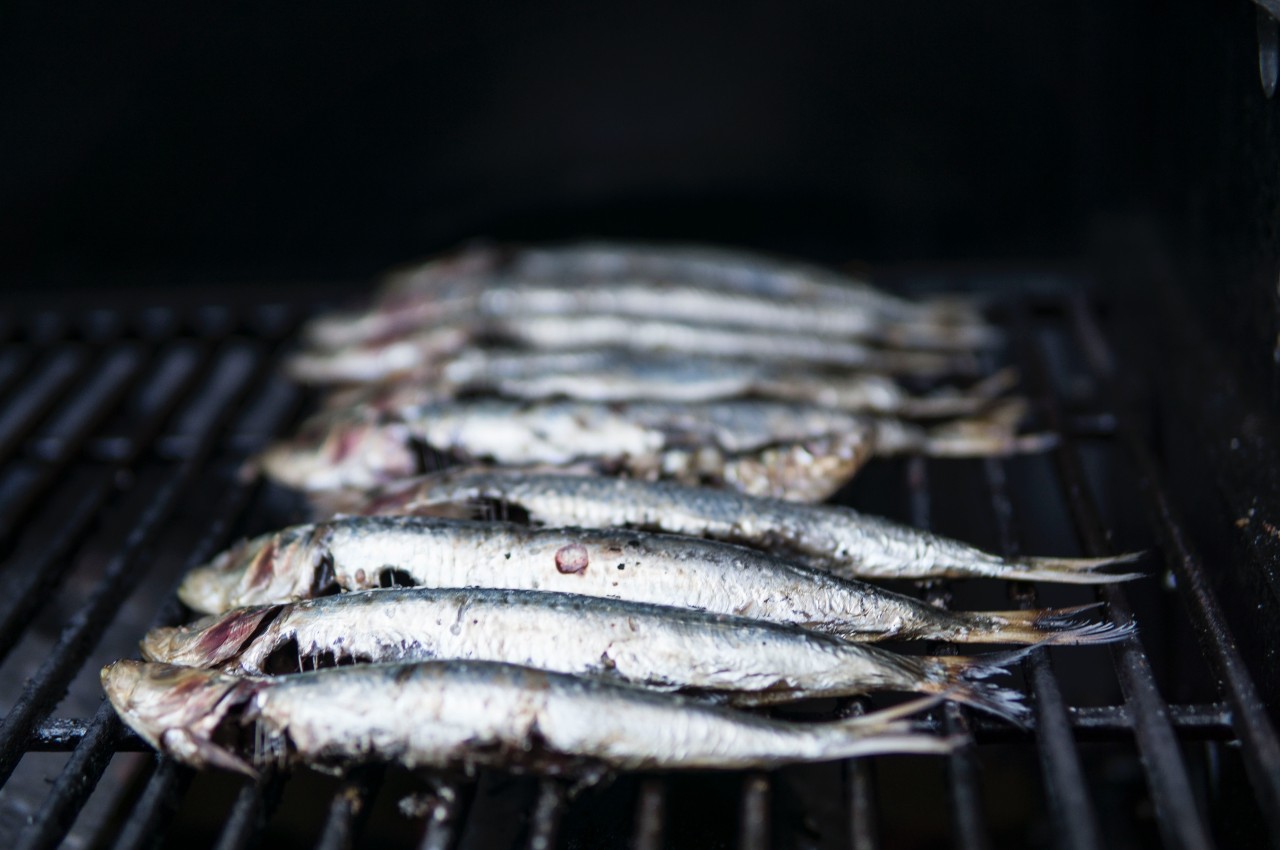
Fish a la Plancha / over the coals
If cooking fillets directly on the grill, choose fish where the skin and flesh is fairly robust and can stand up to the heat - in the markets close to Olhos de Agua or in Albufeira you can buy fresh, Dourado, Squid, Sardinhas, Linguado and Salmonette or Monkfish. Make sure the skin of any fish that you use for this method is generously oiled (olive oil) and seasoned with salt - this helps to prevent sticking and gives the skin a wonderfully crisp, tasty finish. A good way of cooking more delicate fillets, such as sea bass or plaice, is to wrap them in foil with a splash of liquid and aromatic herbs. This helps to protect the flesh and lightly steams the fish during cooking, ensuring you have wonderfully moist flesh.
For something a little different, fish can be marinated, diced and threaded onto a skewer to form fish kebabs.
One of the best and most simple ways of barbecuing fish is to leave them whole - a whole sea bass or bream makes an impressive main, and the bones help to impart flavour and moisture into the flesh, Sardines, Mackerel, or Red Mullet are generally the best fish for cooking whole. Not only are they affordable and widely available, they also suit a lot of tasty rustic flavours and don’t require too much preparation.
Leaving them whole also allows you to stuff the cavities, a wonderful way to add more flavour to the flesh of the fish. To help keep the stuffing inside the fish, and the flesh intact, fish baskets are one of the most handy gadgets you can buy for the barbecue season.
You can also wrap whole fish in tin foil, which will add moisture but not produce a crispy skin.
Or if you are simply to tired go to Aroma Di Mare for all you can eat fish for 12 Euros!
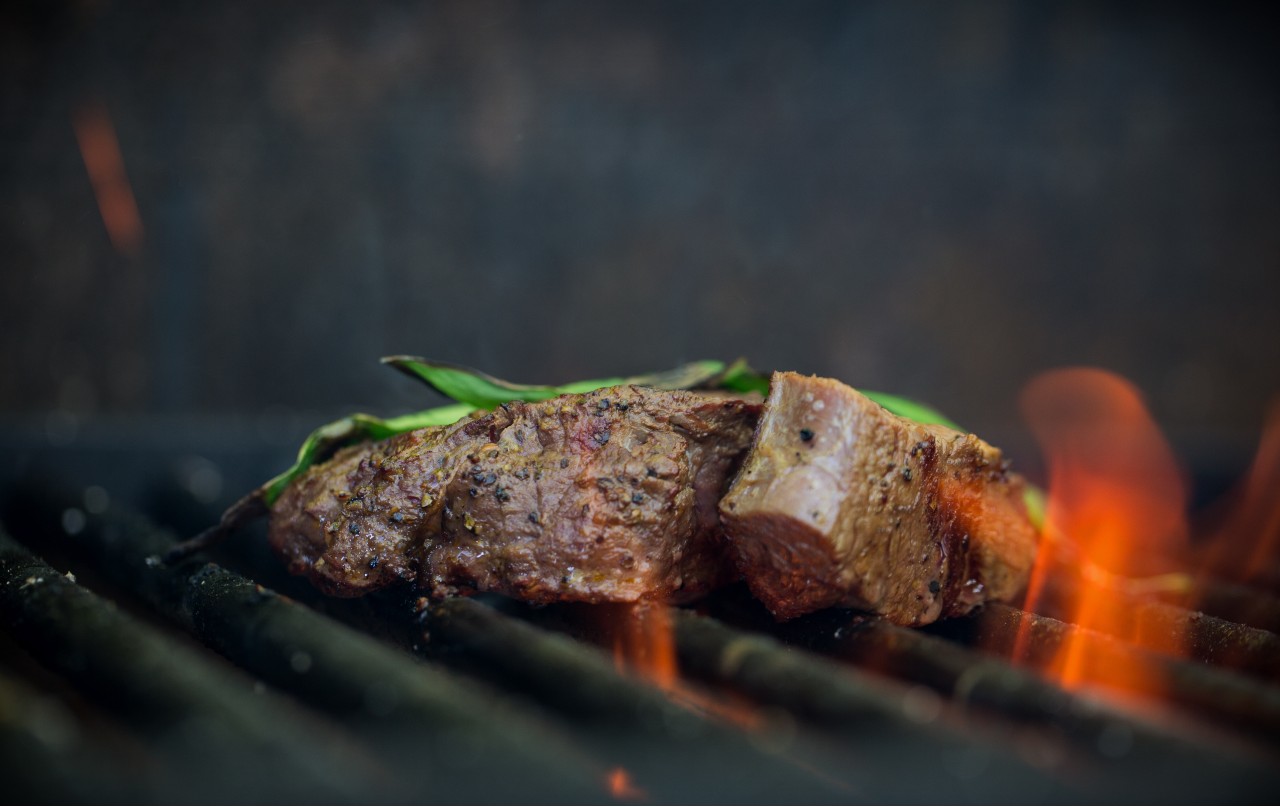
Now the sticky stuff - Marinades, sauces
Marinating fish for the barbecue is a great way to impart an extra kick of flavour try a simple drizzle of oil with a few herbs and finish with a squeeze of lemon juice. In general, barbecued fish suits the classic flavours such as lemon, garlic, chilli, basil or thyme, avoid overpowering flavours that will mask the delicate taste of the fish.
Flavoured butters can be a good option, and can be used to both stuff the fish before cooking or baste it while it cooks try chive, tarragon and Parsley butter flavoured with lemon zest.
A selection of sauces, relishes and sides go beautifully with barbecued fish. Salsa Verde, tomato mayonnaise or guacamole dip are all great options. Simply grilled vegetables such as tomatoes, courgettes and peppers or citrus-dressed salads also make worthy accompaniments.
BBQ Tips
Prevent your meat from sticky to the grill - This is a great trick, cut a potato in half, stick a fork in the uncut end and then rub the open end up and down your grill. The heat releases the starch, and this prevent the meat protein from sticking to the hot surface.
Prevent dried up burgers - When you drop your burger patty onto the grill press a small ice cube into the middle and as it cooks the ice cube melts distributing the water throughout your burger keeping it moist, you can also press a knob of butter on to the flip side to finish off the cooking process for a juicy burger guaranteed.
Best Caramelization and crust on your steak - Apply apple juice to the streak before you place it on the grill once you flip apply more!
Tasty Kebabs - Instead of using a wood or metal skewer why not try a rosemary branch, simply slide your meat and veg chunks into the rosemary twig as you would a normal wooden skewer, the result in taste is great. Another great flavour enhancer is to make a brush using rosemary, thyme, sage bay leaf, oregano and dip in olive oil then brush over the food whilst cooking
Tenderize your meat before it goes on the grill - Easy and effective, for fins & feathers AKA fish and chicken apply some lemon juice either side of the meat before cooking, and for steaks, beef joint, pork tenderloins and lamb use lime juice, leave in the fridge for a couple of hours. For thick cut pork chops cook over the coals in a foil wrap for the first 15min, the steam cooks the meats and tenderises it at the same time, finish off over the coals for some direct heat to sear the meat surface
Clean your grill nature’s way - Simple, cut a large onion in half and then stick a fork in the uncut end and push the onion up and down the grill and watch how easy it removes the black carbon and grease. Another great trick, once your grill has cooled down lay on a few sheets thick of newspaper and rest a few sheets on top, pour water over the newspaper and leave till the next day the solvents in the printer’s ink will dissolve the burnt-on carbon, so finish off by wipe the grill with the paper.
For a fantastic BBQ supper- why not try a really special place, one of our favourites, Barbacoa, in Almancil.

